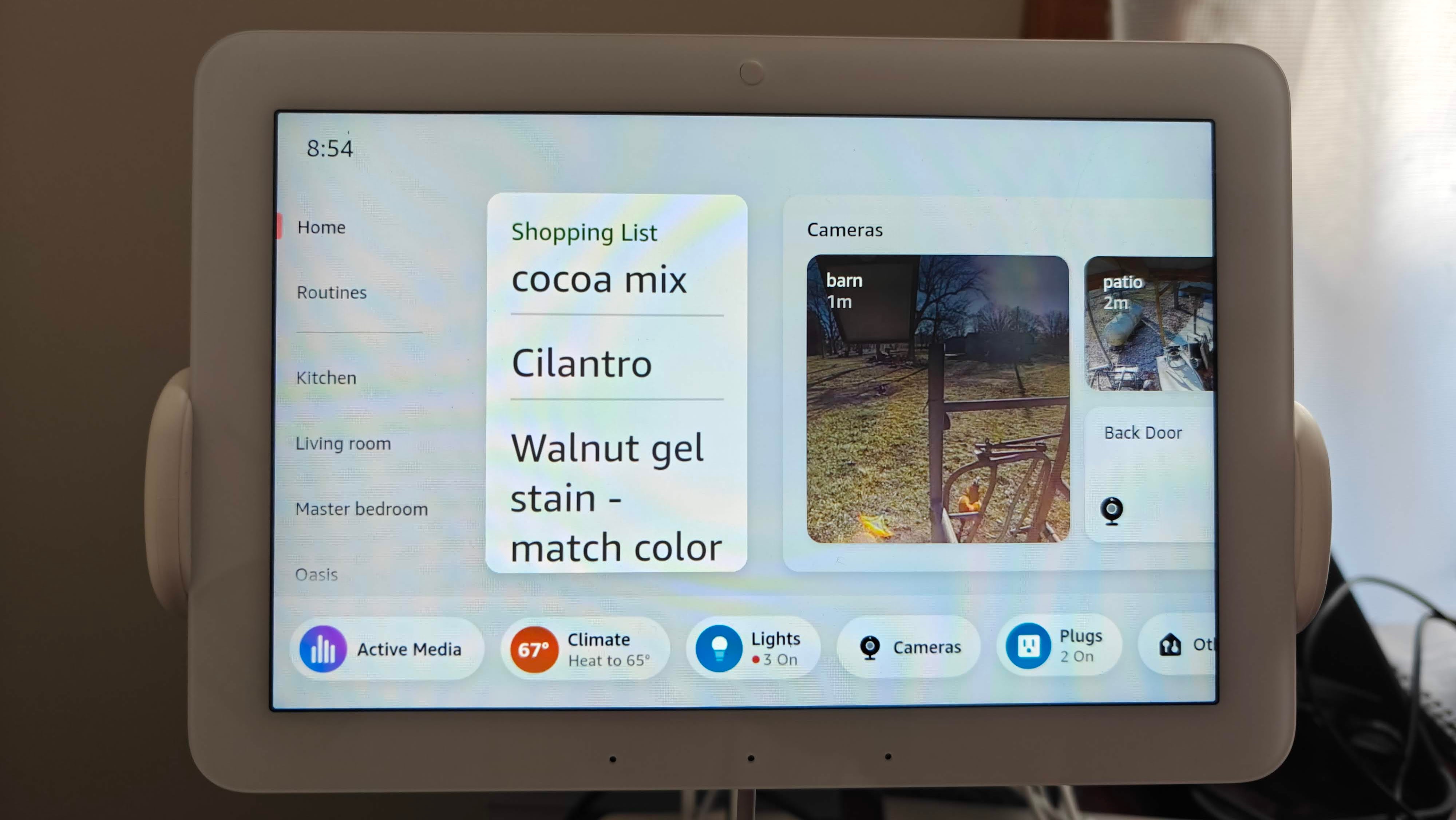
Amazon's efforts in the smart home space have improved over the past few years as the company continues expanding Alexa's capabilities. But aside from improving the digital assistant, Amazon has also been making its Echo devices more powerful with useful sensors and faster processors.
All these changes lead to a more enjoyable experience when controlling your smart home devices. But as people's smart homes continue to expand with more and more connected devices, having a single device that you can see and control your home can be really helpful. That's what the new Amazon Echo Hub is designed to do, and it mostly accomplishes it.
Up and running in no time
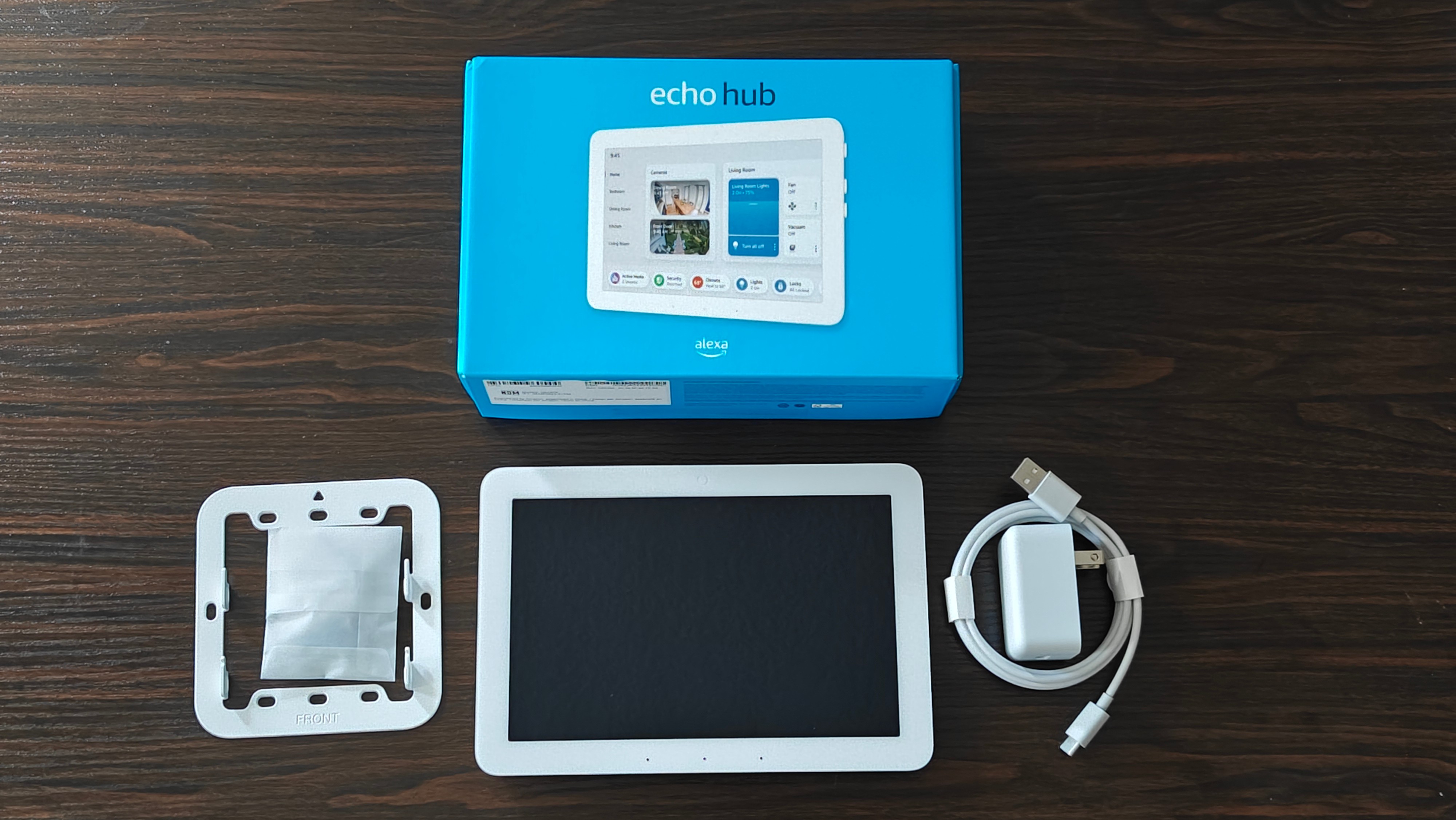
If you didn't know better when opening up the box for the Echo Hub, you might think you accidentally ordered one of Amazon's top tablets, more specifically, the Fire HD 8. This is because the display and size of the Echo Hub match that of its tablet sibling. It isn't until you pick it up that you get the full picture due to how much thicker it is, coming in at .6 inches compared to the .37 inches of the Fire HD 8.
But the thickness isn't an issue since the Echo Hub isn't meant to be toted around like a tablet. In fact, you can't do that because there's no battery in it. Instead, the Hub is designed to be mounted on the wall or put on a stand. Amazon includes the wall mount and necessary hardware in the box. But the stand is a separate purchase, which, as of the time of this review, is not available on Amazon yet.
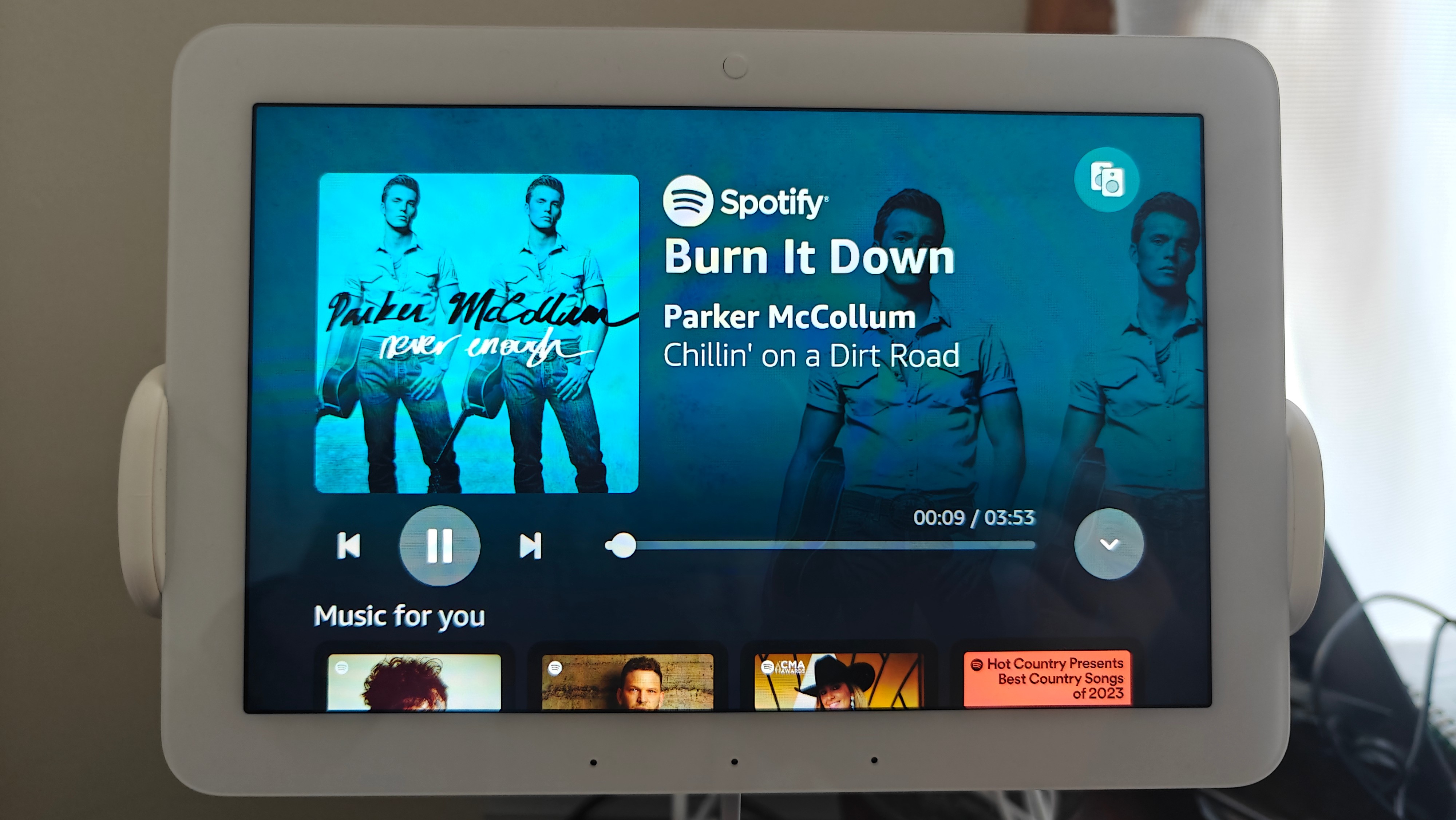
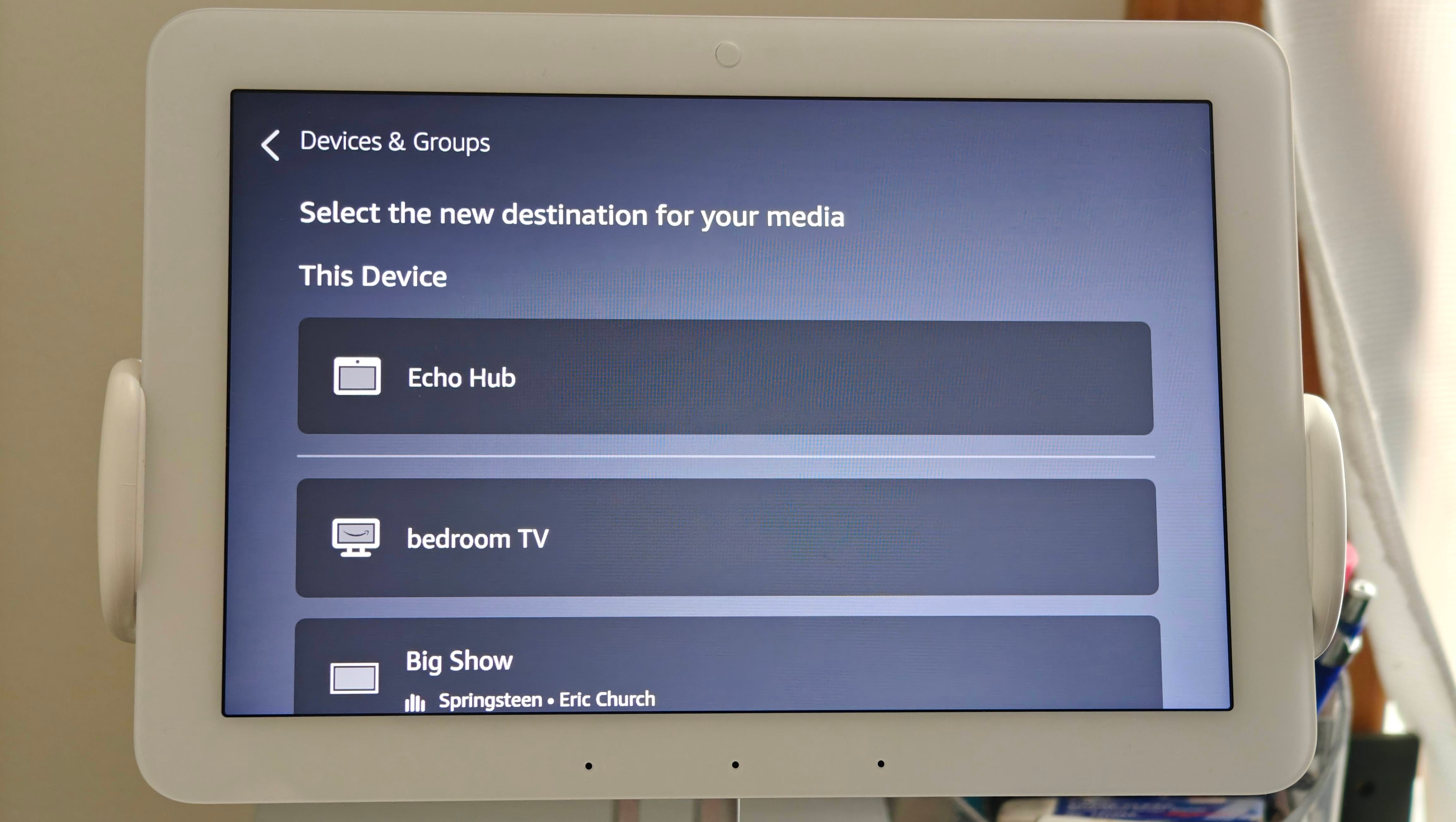
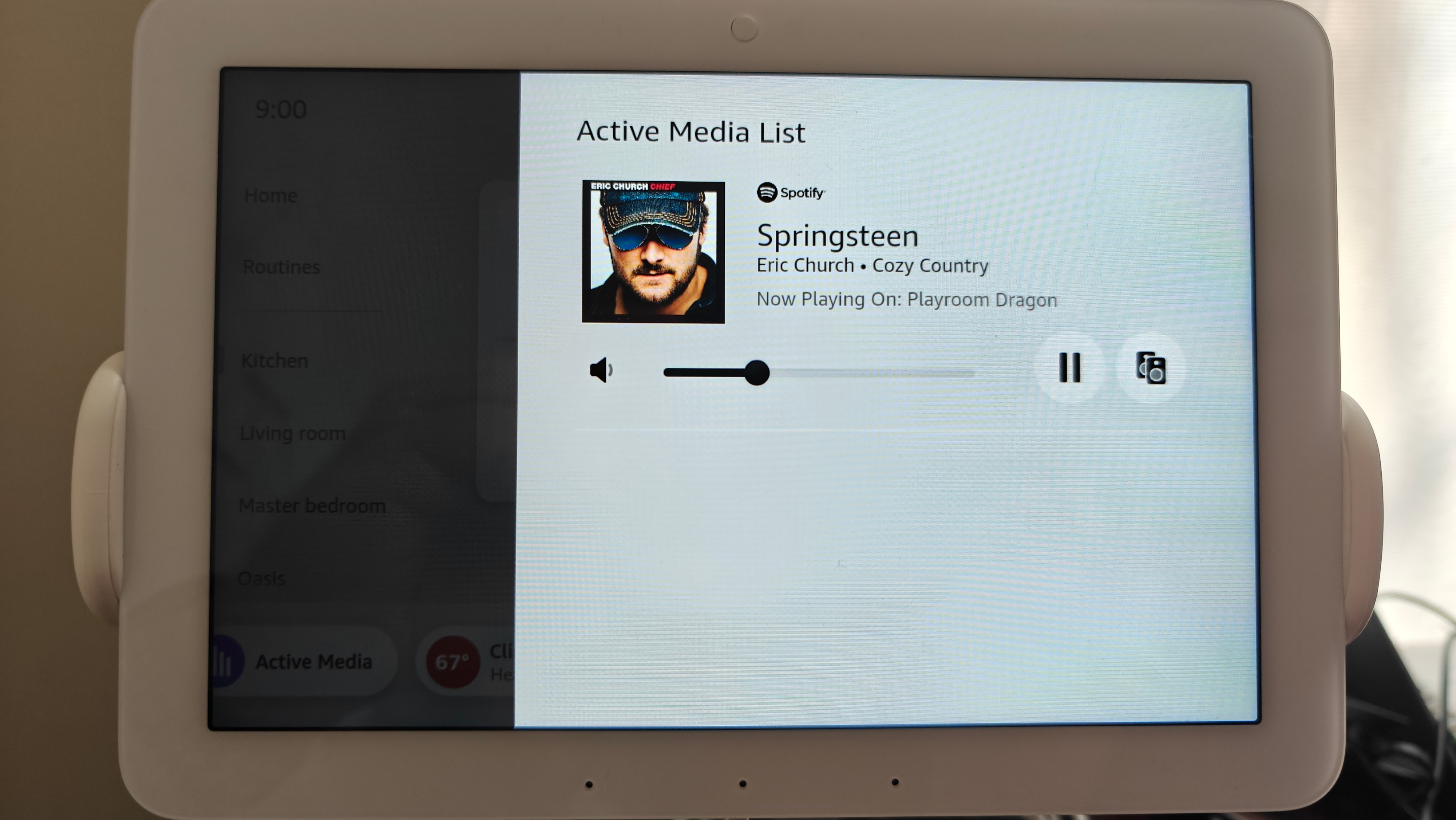
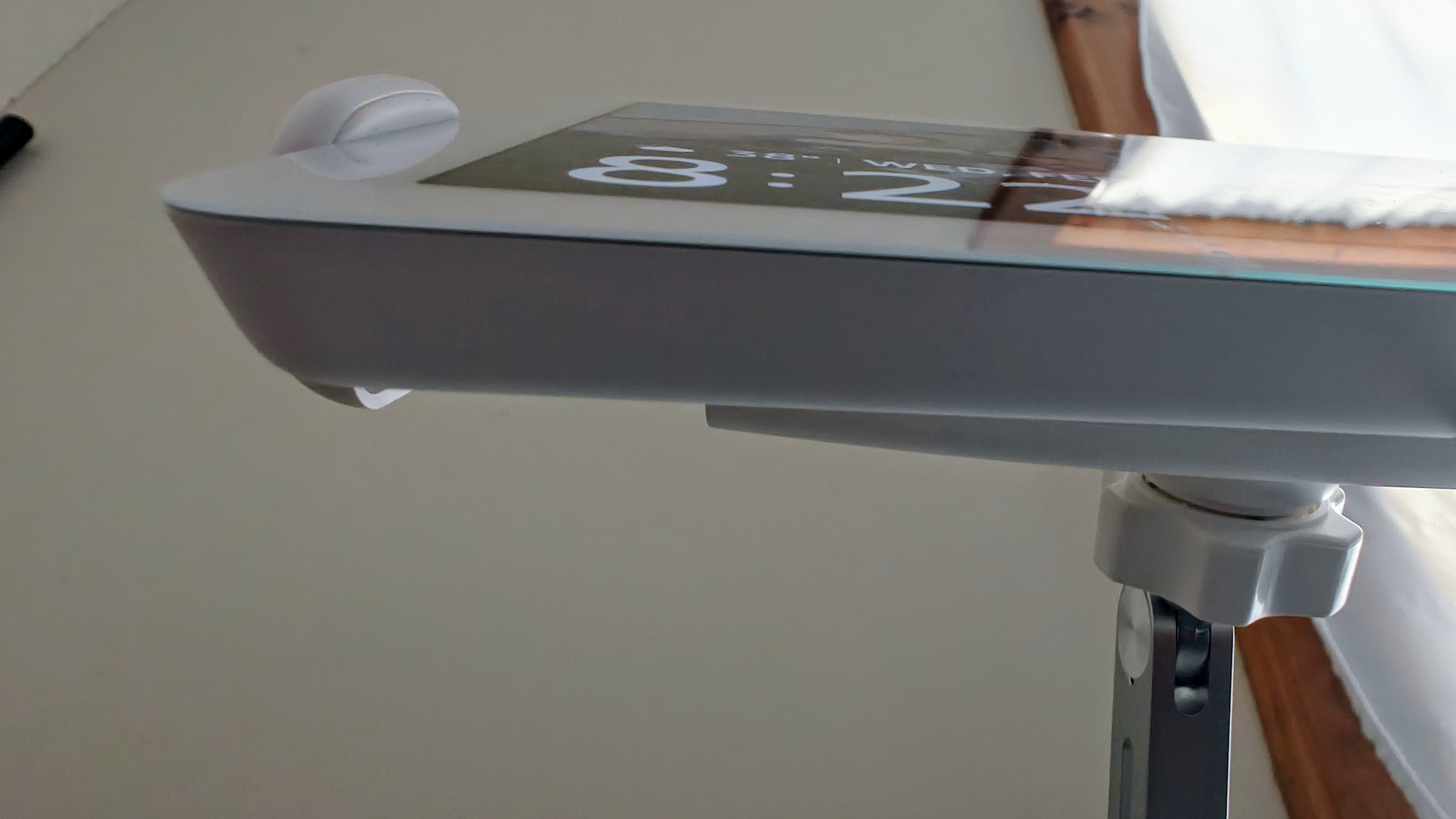
The included wall mount, screws, drywall anchors, USB-C cable, and wall adapter are all available to get you started with using your new Echo Hub. Amazon does a good job of including clear directions for how to mount the Hub to your wall. It even thought some about cable management with clips on the back of the device to put extra cable you might have. I chose to buy a third-party stand to use for the Hub, which I purchased through Amazon.
You don't have to use the included cable and wall charger if you don't want to. Just make sure you are using a good quality USB-C cable and wall adapter, and make sure it adheres to USB PD protocol and supports both 5V/2.4A and 9V/3A ratings. The Echo Hub also supports Power over Ethernet (PoE) so long as you have a compatible USB-C converter.
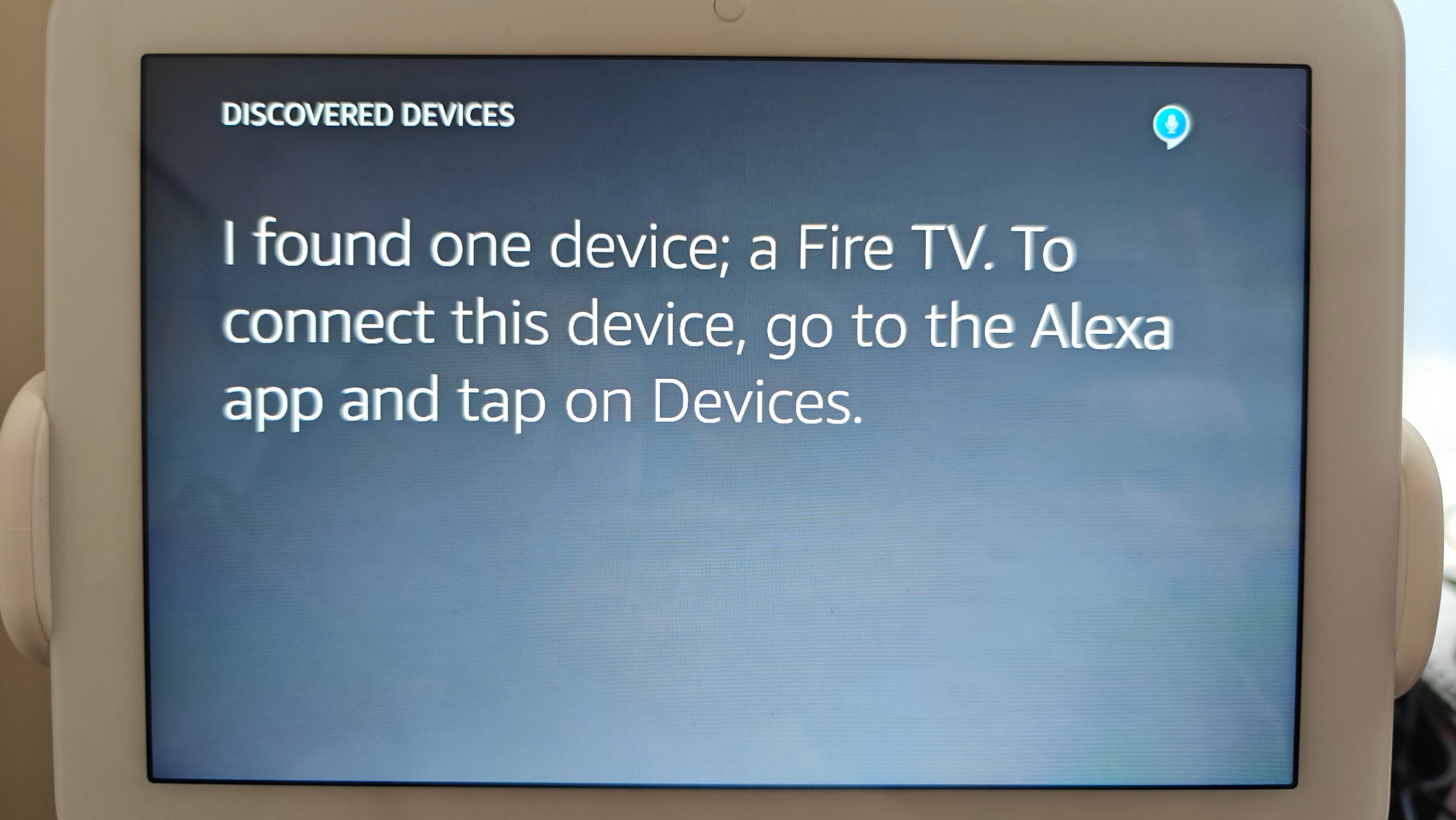
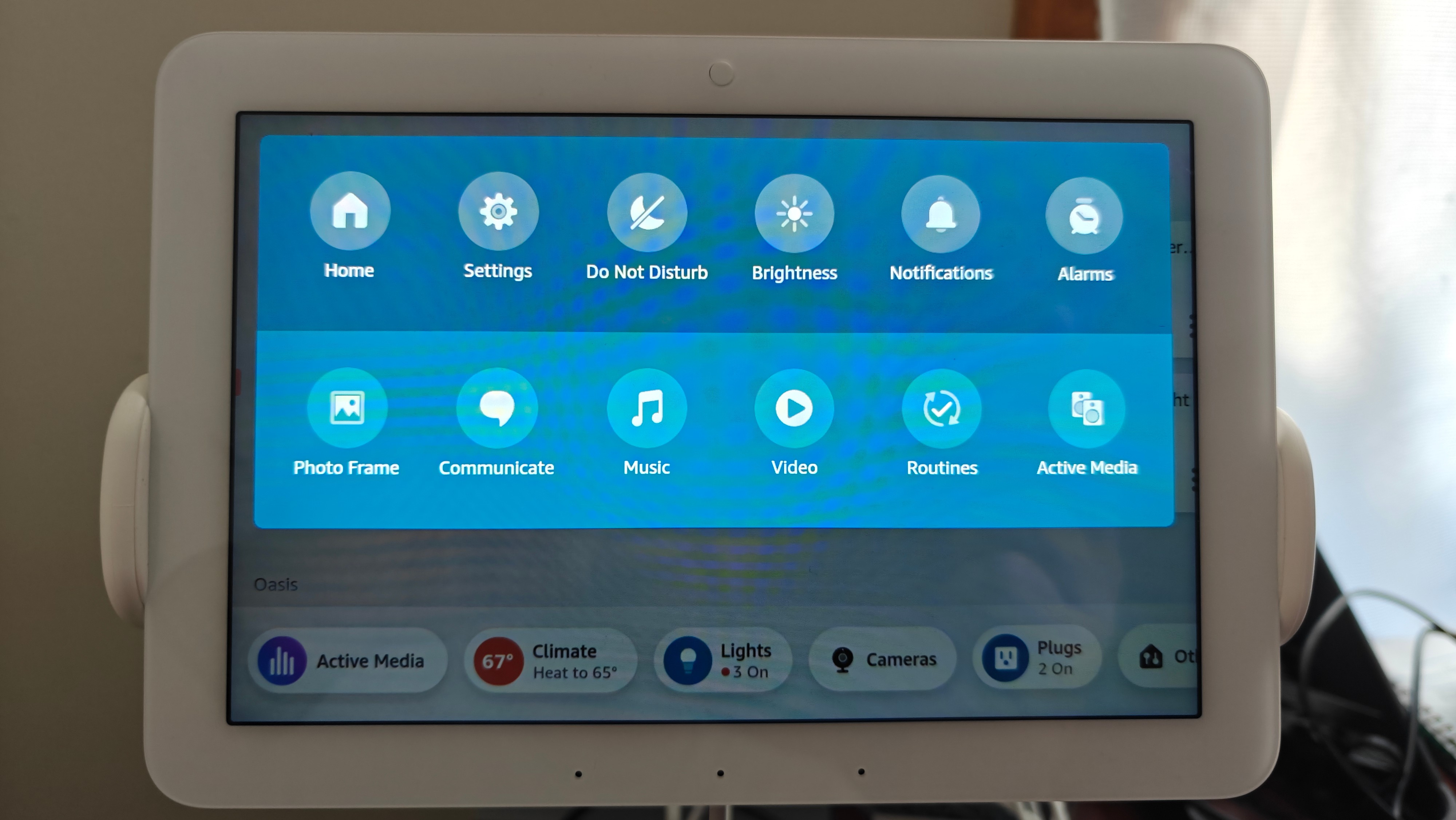
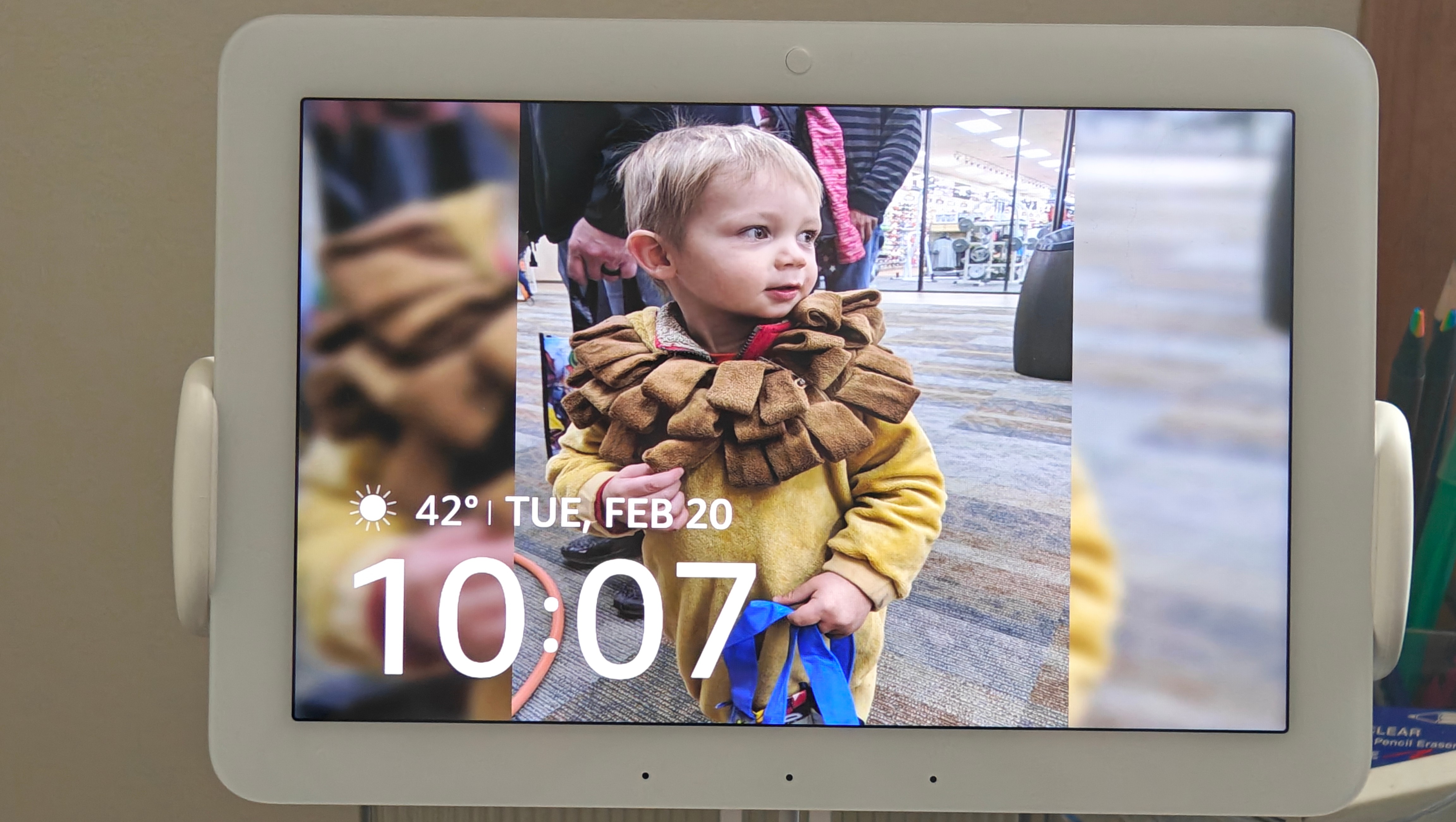
With everything mounted and powered up, the setup process is simple, and the device walks you through everything, much as the other top Alexa speakers do, like the Echo Show 10. The main difference here is that when the device isn't showing pictures from your Amazon Photos gallery or its curated images, you have a dashboard with all your connected smart devices.
The interface of the Echo Hub is customizable to what you see on the home screen. You can choose what widgets you want on the screen, the order, and any favorite devices or groups you frequently use. Picking your favorites is done in the Alexa app on your phone, which is also where you can adjust some of the device's other settings.
I almost love using the Echo Hub
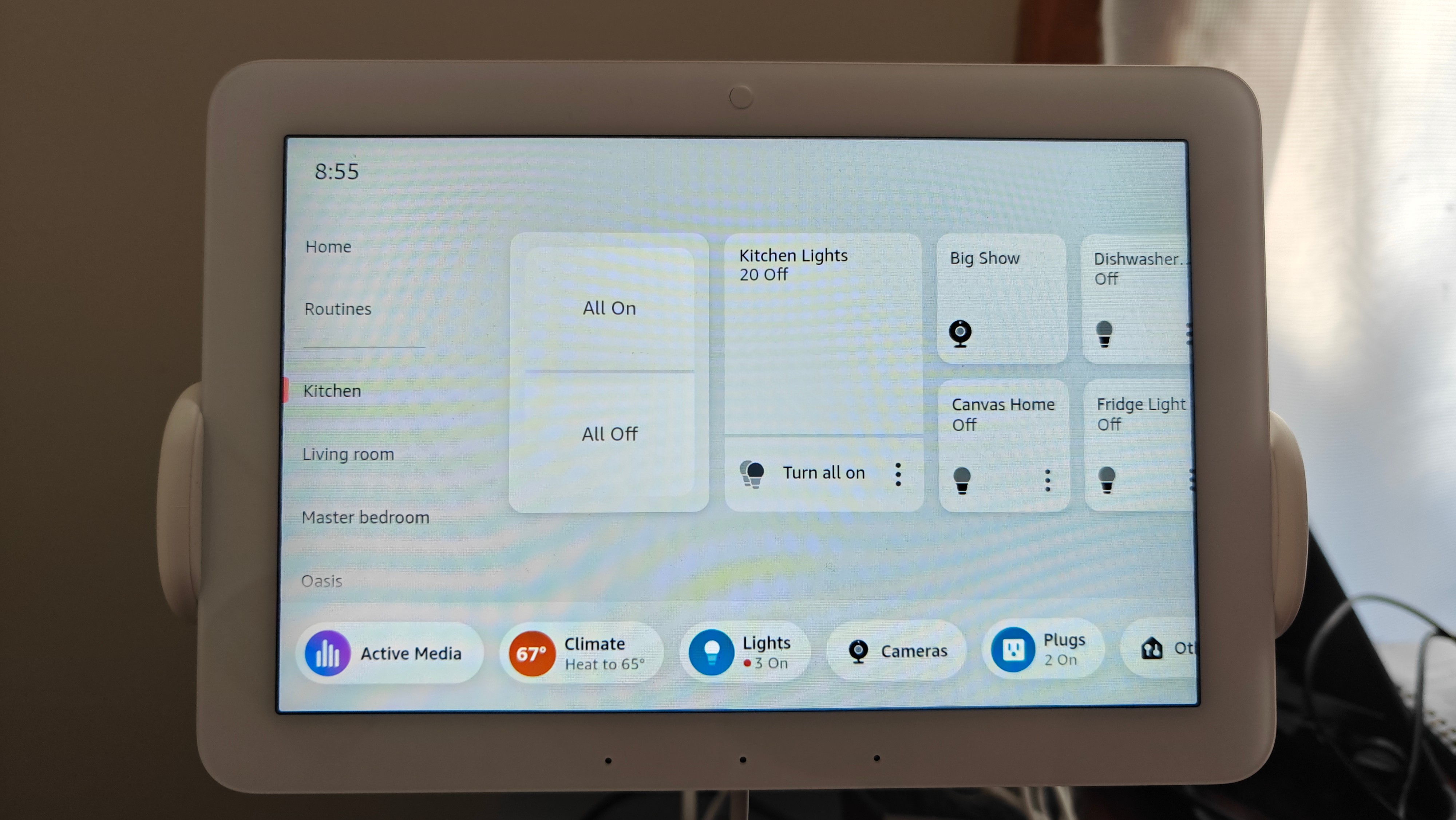
I really like the way that Amazon has the interface laid out. It has widgets similar to what you see on something like the Echo Show 15, taking up the majority of the home screen. Then, along the bottom of the screen are quick buttons to easily access specific smart device categories you have set up, like any media playing on other Alexa devices, cameras, thermostats, and more.
Along the display's left edge are tabs to return to the home page and routines. Then, you get specific groups you have set up within the Alexa app. These can be rooms in your home, custom device groups you make, and other custom options. I do wish that Amazon offered a dark mode for the UI instead of always being light.
The overall layout of the Amazon Echo Hub is well thought out, making it easy to use and learn.
A nifty feature Amazon included in the Echo Hub is that it will automatically go from whatever screensaver you have set up to showing your smart home dashboard when you approach it. This is done using passive infrared (PIR) sensors situated along the top of the frame.
Aside from the proximity sensors, the Amazon Echo Hub also has a built-in ambient light sensor, Bluetooth LE, Zigbee, Thread, and Matter to better future-proof the device for your smart home needs. There are two top-firing speakers and three microphones along the bottom of the frame, so you can use the Echo Hub just as you would any other excellent smart display.
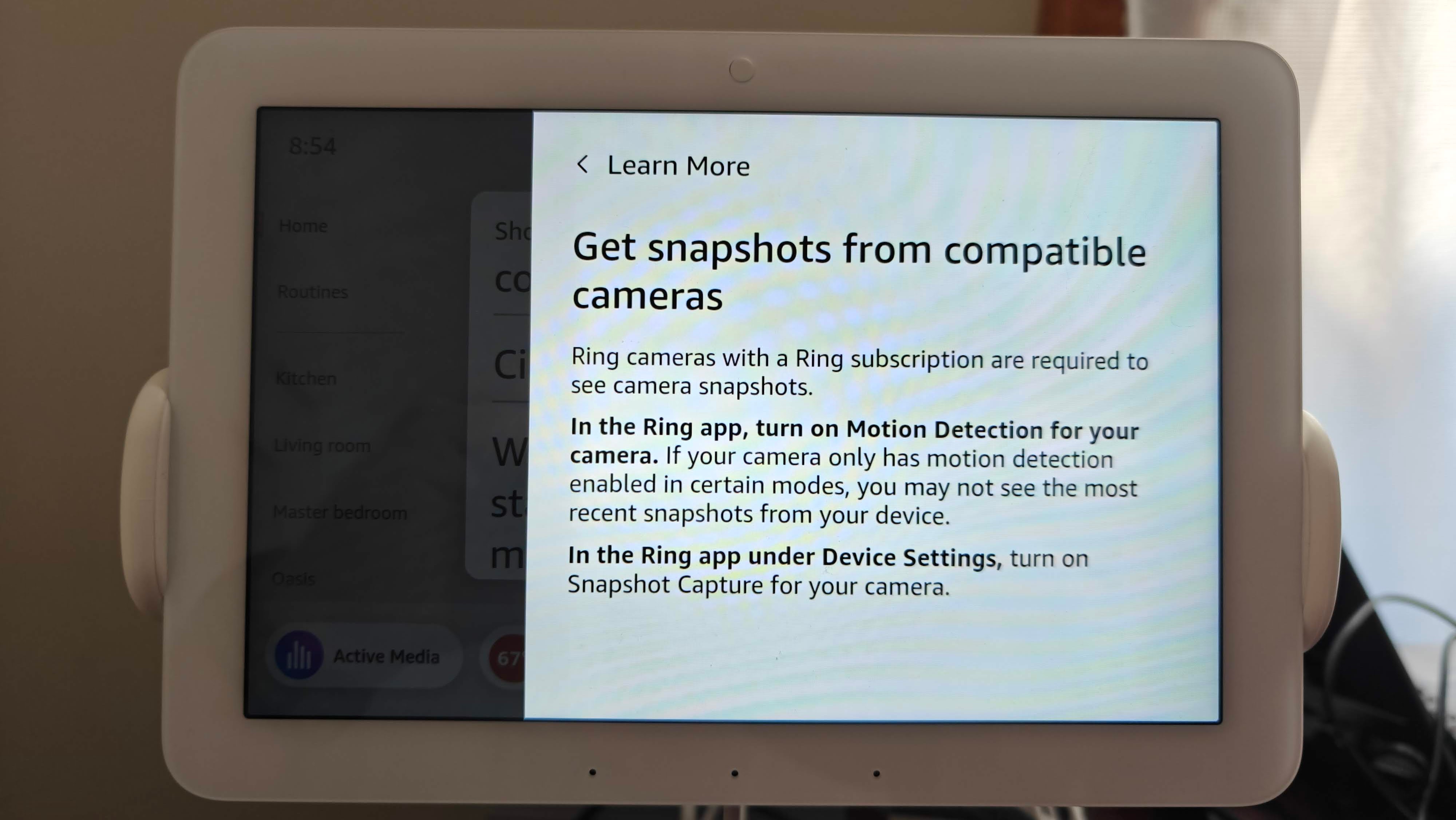
For all the good ideas Amazon put into the Echo Hub, unfortunately, there is one area that really confuses me about the device. Just about everything about the Echo Hub says it's a smart display, but Amazon went with the less powerful processor used in its tablets instead of the AZ2 Neural Edge processor or even the older AZ1 found in its smart speakers. Even the entry-level Echo Pop has the AZ2 processor.
This choice causes some noticeable delays when opening different device groups, adjusting the brightness of lights, and opening camera previews. Voice commands and tapping the on or off option for a light are snappy, but other actions... not so much. The average time I'm experiencing when opening a group is five to eight seconds before it loads; that's too far long for a purpose-built device.
So much about the Amazon Echo Hub is well done, but the processor choice was a mistake.
Another issue I have with the Echo Hub is the camera previews. I like the idea of quickly glancing at the camera widget to see my favorite security cameras, but those previews are only available for Ring cameras. While that is somewhat understandable since Amazon owns Ring, it definitely makes the feature less usable, and it feels like a bit of a wasted opportunity.
Should you buy the Amazon Echo Hub?
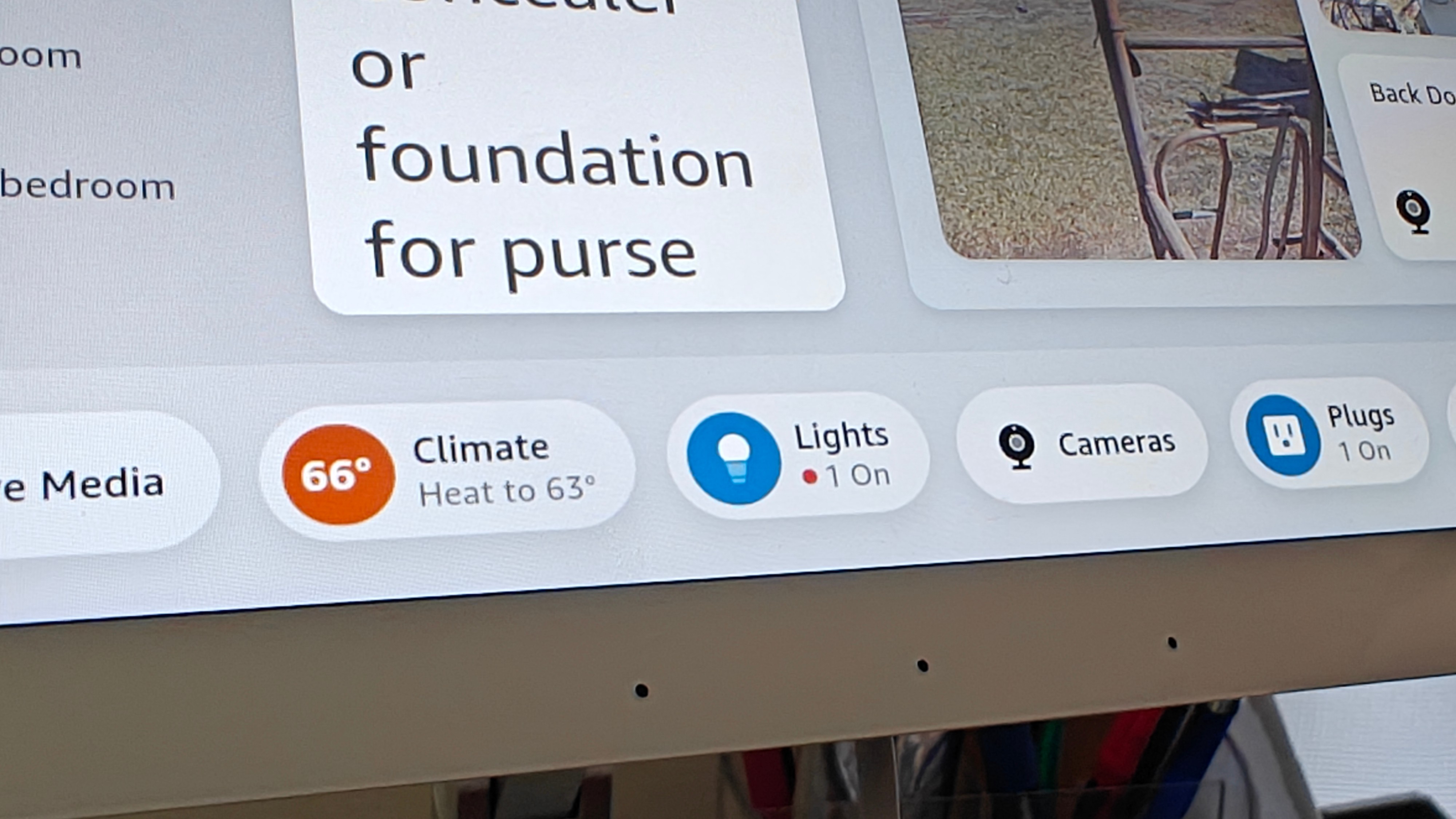
If you are looking for a smart home hub, you will find some great options, like the Brilliant smart home controller. That said, while it's a great product with some unique features, it's also quite pricey at $399. The Amazon Echo Hub, on the other hand, is $180 and has its own set of unique features. One of the main benefits of the Echo Hub is its simplicity and ability to be a smart display and home controller.
The processor choice is frustrating, but it doesn't completely ruin the experience of using the Echo Hub. The device works well and does what it is designed to do. It just does some things slower than it should. If you want an easy way to see the status of your smart home devices and control those items, and if you want a smart speaker too, then the Amazon Echo Hub is for you.
At your fingertips
Easily see your smart devices status and control each one from a single dashboard. The Echo Hub makes managing your smart home easy, and acts as a smart display for added functionality. There are some areas where it can be slow to respond, but overall, it's a solid device.







